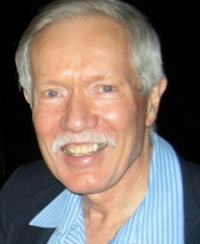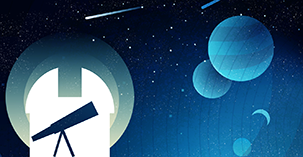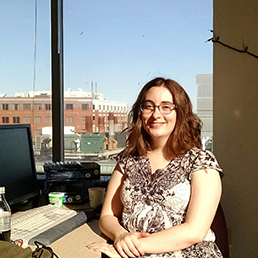Career Development
Elaine Jiang

Elaine Jiang
My name is Elaine Jiang, and I am a current senior at Brown University studying computer science. I spent the first nine years of my life in Suffern, New York, and the following nine years in Shanghai, China, before coming back to the states for college. In terms of technology, I’m interested in artificial intelligence (AI), virtual reality, and ethical software design. Outside of computer science, I can be found teaching and mentoring students in science, technology, engineering, and math (STEM), going to spin classes, and exploring Providence's delicious brunch options.
My parents have always encouraged me to explore my interests in science and technology. When we lived in upstate New York, one of my favorite memories was going to the Museum of Natural History with my dad every year, looking at fossils and animals, and jotting down notes in my “science journal.” I’m really grateful to have been exposed to science at a young age, as this certainly led to my interest in becoming a STEM major.
During the summer after my sophomore year in college, I had the opportunity to do research with Tom Sgouros, who managed Brown’s Yurt Ultimate Reality Theatre. Tom introduced me to Kim Arcand from the Chandra X-ray Observatory, and we worked with her to render a three-dimensional model of supernova remnant Cassiopeia A into virtual reality. It’s been an incredibly rewarding experience, and I’m excited to see what we do next.
Pathways to the Stars -- II

Jeff McClintock
(A continuing series on how astrophysicists’ varied career paths. Pathways to the Stars -- I) Jeff's Journey
Jeff McClintock is recognized around the world as one the pre-eminent experts on black holes. In 2009, he shared the American Astronomical Society’s prestigious Bruno Rossi prize, along with Ron Remillard and Charles Bailyn for his work on the measurement of the masses of black holes.
McClintock has also served on the board of directors for the Giant Magellan Telescope, a telescope under construction that when it is commissioned in 2022, will be the largest optical telescope in existence. As it turns out, Jeff has been interested in large telescopes for a long time, going back to his childhood in Port Orchard, Washington.
“I saw an ad in Popular Mechanics,” he remembered. “It said, ‘You can build a 100-power telescope for $1!’”
McClintock mailed in his dollar, and received two lenses in the mail.
“That was it. Two lenses. I inserted the lenses at the ends of a discarded 8-foot cardboard tube which had been used to store linoleum."
He didn’t have a mount for his telescope, so he put it on several chairs in the living room, and looked through it, at some lights across Port Orchard strait near Seattle.
“I could see blue lights across the bay, and read a sign. It was upside down! I took it up to the attic and looked at the moon. I was blown away!”
Inspired by the view of the craters on the moon, McClintock built a second telescope, a 6” reflector.
Pathways to the Stars -- I

Illustration: NASA/CXC/K.DiVona
(A continuing series on how astrophysicists’ varied career paths. Pathways to the Stars -- II)
Our blogger today is Dr. Wallace Tucker, who has worked on the Chandra project since its inception and has been involved with high-energy astrophysics for several decades. In one of his many roles, Wallace has served as the Chandra Science Spokesperson, helping non-experts understand and enjoy the amazing discoveries Chandra makes. He is the author of several popular books including one published by Smithsonian Books.
How did you get to be an astrophysicist working with the Chandra X-ray Observatory?
This is a question that almost all of us who work with Chandra get asked at one point or another. Apart from cocktail party conversation — not that astrophysicists go to that many cocktail parties, in my experience — the answer is relevant in terms of ongoing efforts to increase the number of young people seeking careers in science, technology, engineering and mathematics.
And, on the principle that "none of us is as smart as all of us," it is important for maximizing the scientific return of Chandra to get as many people involved as possible. Think about it: some of the bright young minds working on Chandra data today were in elementary school when Chandra was launched!
From Art to Astrophysics – and Back Again

Melissa Weiss Walter (Photo: Brin Deuk Morris)
We are thrilled to welcome Melissa Weiss Walter as a guest blogger. As Mel describes below, she served as the graphic designer, illustrator and social media developer for Chandra's publicity and outreach efforts for many years. Recently, she has scaled back her Chandra time to focus on her personal artistic endeavors. Thankfully, she remains part of the Chandra family and continues to contribute to Chandra releases.
I have been working with the Chandra team in various capacities for close to two decades. I began creating illustrations of black holes after graduating from the University of Rhode Island. Soon after Chandra launched, I was brought on board to continue as their science illustrator and also as their graphic designer. When MySpace took off like a rocket and we realized that social media was here to stay, I also took on the role as a social media administrator.
In 2015, after working with the team full-time for fourteen years, I made the decision to take a step back. I was able to continue just with my duties in science illustration so that I could pursue a career in fine art. Though I may have discontinued my time with Chandra on a full-time basis, I took with me the inspiration of many years looking at the wonders of our Universe through Chandra's eyes.
Before making the change, I had always loved the work I did with the Chandra team. However, I was so busy creating materials that I didn't have a lot of time to reflect on the content I was using. I knew what we did was important but I never realized how influenced I was becoming by the wonders we communicated with the public on a daily basis.
Women in the High Energy Universe: Karla Guardado

Karla Guardado
Karla Guardado is an astrophysicist technical assistant at the Smithsonian Astrophysical Observatory. She studied physics at MIT and wrote her thesis on “Preheating in New Higgs Inflation.”
I wanted to go into a career in astrophysics because I fell in love with space--its marvels and secrets. As I learned increasingly about physics in school, I became more and more inquisitive. It seemed like the more I thought I knew, I realized that there were actually so many more questions to be answered. I always had an affinity with science, but it was the desire to discover these unanswered questions about space that led me to a career in astrophysics.
I became interested in science at a very young age. I was always very inquisitive, but it wasn't until I began putting the scientific method to use that I understood what science could achieve. I loved every part of my science projects, the investigation, experimentation, and drawing conclusions. That was how I began to think of science as a future career.
Modeling, Mapping and Made with Code: Two Summer Internships at the Chandra Operations Control Center
We are very pleased to welcome two special guest contributors to the Chandra blog. Amy Nuccitelli and Jonathan Brande both spent the summer of 2016 working as interns with the Chandra X-ray Observatory team at its Operations Control Center. Amy Nuccitelli will enter her junior year as a mathematics major at James Madison University in Harrison, VA, while Jonathan is pursuing a major in astronomy and a minor in computer science at the University of Maryland, College Park. We thank Amy and Jonathan both for their hard work on the Chandra mission and also for taking the time to share their experiences with the Chandra bog.

Jonathan Brande and Amy Nuccitelli
Interning with Chandra

Alicia Goldstein
We welcome Alicia Goldstein, who was an intern at the Chandra X-ray Center this past summer, as our guest blogger. Ms. Goldstein, originally from Ellicott City, MD, is currently a senior at the University of Maryland, Baltimore County where she majors in mechanical engineering. Prior to this summer, Ms. Goldstein was an intern at NASA’s Goddard Space Flight Center and lists working for NASA as her ideal career goal.
This summer, I worked on two separate projects. The first involved the development of a Python code that would display the defined and predicted positions and velocities of Chandra, and the second involved the analysis of the periods of the variable stars in the Chandra Variable Guide Star Catalog,, or VGuide, database. The coding project involved interpreting and manipulating previous code, as well as creating entirely new sections. Given an input of two data files, the code was able to output a file with plots of the predicted and defined velocities and positions of the spacecraft.
Meet an Astronomer: Paul Green (Part 2)
Paul Green is an astrophysicist at the Harvard-Smithsonian Center for Astrophysics. His scientific research includes the study of quasars and carbon stars. He pursues these topics while working in Chandra's Director's Office, helping to ensure that the science of the telescope gets done smoothly. When he's not doing all of these things, Paul is also known to play a mean bass guitar.
Meet an Astronomer: Paul Green (Part I)
Paul Green is an astrophysicist at the Harvard-Smithsonian Center for Astrophysics. His scientific research includes the study of quasars and carbon stars. He pursues these topics while working in Chandra's Director's Office, helping to ensure that the science of the telescope gets done smoothly. When he's not doing all of these things, Paul is also known to play a mean bass guitar.
Women In The High-Energy Universe: Megan Watzke
Megan Watzke is the press officer for NASA's Chandra X-ray Observatory. Her responsibilities include writing press releases, organizing press conferences, and more for newsworthy results from the telescope. She is also a co-investigator in the "From Earth to the Universe," "From Earth to the Solar System," and "Here, There and Everywhere" projects.
Like many people who work in science, I had an interest in the subject since I was a little kid. I remember going to the public library at 7 or 8 years old and asking the librarian for books on pulsars and quasars (they sounded like the coolest things I had ever heard of.)
